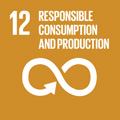- Docente: Giuseppina Paola Parpinello
- Credits: 6
- SSD: AGR/15
- Language: Italian
- Moduli: Giuseppina Paola Parpinello (Modulo Mod 1) Marco Dalla Rosa (Modulo Mod 2)
- Teaching Mode: In-person learning (entirely or partially) (Modulo Mod 1); In-person learning (entirely or partially) (Modulo Mod 2)
- Campus: Cesena
-
Corso:
First cycle degree programme (L) in
Food Technology (cod. 8528)
Also valid for First cycle degree programme (L) in Viticulture and Enology (cod. 8527)
Learning outcomes
The aim of this course is to provide the students with the knowledge of the main unit operations in food technology applied to raw materials, semi-finished and final foods. In particular, large space to the conservation and stabilization operations will be dedicated.
Course contents
Module 1:
Filtration: Darcy's equation; surface and depth filtration; filtration's parameters. Filtration operations: on membrane (microfiltration, reverse osmosis, ultrafiltration, nanofiltration), with deposit, depth filtration, cross-flow filtration. Physical principles and types of systems (pressure, vacuum, centrifugation), by type of operation, by type of filter medium. Filtration adjuvants. Polarization phenomena. Introduction to industrial applications. Tyndall effect; turbidimeters and nephelometers. Static and dynamic sedimentation: decantation, flotation, centrifugation (vertical and horizontal axis). Pressing: factors influencing extraction yield. Continuous (screw, belt) and discontinuous (pneumatic, piston) presses; pressing diagrams and cycles of positive and vacuum pressure. Unit operations based on thermodynamic transitions and equilibria: Distillation (Raoult's and Henry's law; liquid / vapor equilibrium curves in a closed and open system; simple and fractional distillation; still and distillation columns; solubility coefficient; azeotropism; hybrid products), solvent extraction. Use of low temperatures: refrigeration (refrigeration cycle, technical parameters, use of refrigerant gases) cryoconcentration, crystallization.
Module 2:
Stability factors in preserved food of plant and animal origin: Water activity and mobility of food systems. Polymeric approach and glass transition. Adsorption and desorption isotherms. Dependence of reaction kinetics on temperature (Arrhenius and WLF law). State diagrams. Unit operations based on the transfer of thermal energy (cooking, blanching, pasteurization, sterilization, freezing, deep freezing and IQF). Use of microwave, radio frequency and ohmic heating. Unit operations based on the transfer of thermal energy and matter (evaporation and dehydration); water removal technologies (drying, freeze-drying, spray-drying, drum drying, direct osmosis).
Readings/Bibliography
Singh, P.R., Heldman, D.R. Introduction to Food Engineering, Editor: Academic Press, 2014. https://nzifst.org.nz/resources/unitoperations/index.htm
Teaching methods
Frontal teaching, individual and group exercises which will allow the students to practice, use of spreadsheet, visits to food industries, seminars.
Assessment methods
It includes independent tests for each module managed by each responsible of the module. At the end of the course, a multiple answers - written test will be set followed by its discussion. Oral examination including three questions will be set in the subsequent sessions. Enrollment to the exam will be done through ALMAESAMI platform according to the dates available to the students in large advance.
Teaching tools
Projector, PC, videos, internet, visits to industries (when possible). Power point slides of the lectures will be available through the website https://virtuale.unibo.it
Office hours
See the website of Giuseppina Paola Parpinello
See the website of Marco Dalla Rosa
SDGs


This teaching activity contributes to the achievement of the Sustainable Development Goals of the UN 2030 Agenda.
